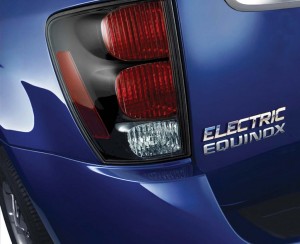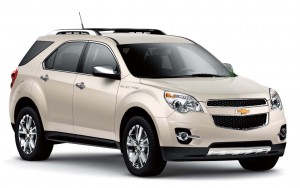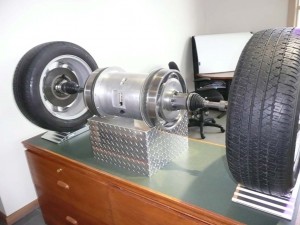The 2011 model-year is going to be a big one for those betting on electric propulsion. We’ll see the launch of several critical products from major automakers like Nissan and Chevrolet, with the Leaf battery-electric vehicle and the Volt plug-in, respectively. And other major automakers, such as Ford and Toyota will charge into the electric market soon afterwards.
Yet, the industry’s big guns are actually late to plug into the emerging electric niche. By the time Volt and Leaf reach showrooms California start-up Tesla’s little Roadster, an electric sports car, will have been on sale nearly two years. And the market is filled with offerings from other small players, such as Think and Bright Automotive, who hope they can use this paradigm shift in propulsion to get a shot at the major leagues.
Some of these new players are starting from scratch, with ground-up offerings, like the upcoming Tesla Model-S sedan. But Ohio-based Amp is taking quite a different approach. The maker is taking existing products, such as the Saturn Sky and Chevrolet Equinox, stripping out their gasoline-driven powertrains, and replacing them with electric drivelines.
We recently got the chance to take the Amp Equinox out for a drive and while the prototype had a few bugs we found it a reasonably pleasant experience. Better yet, it offers to provide a roomy alternative to pint-sized offerings like Nissan’s Leaf, which are likely to dominate the electric vehicle market for some time to come.
Short for Advanced Mechanical Products, Amp is the brainchild of inventor Steve Burns, one of the true believers in electric power. As an outsider to the auto industry he has brought an interesting and non-traditional approach to both the company’s business model and its technology.
While the original Saturn Sky was in-line with the approach battery car makers traditionally take – small, lightweight vehicles need less power and fewer batteries to propel them – Burns wanted to target a very different market with the Chevrolet Equinox conversion.
“We picked it because all other EV makers are focusing on small cars,” he said, adding that “We (also) wanted something that wasn’t dorky looking.” Like a Leaf or Prius, perhaps?
With the Chevy crossover, meanwhile, Amp has targeted a range of 150 miles per charge, a full 50% more than Leaf and the upcoming Ford Transit Connect EV and Focus EV models will deliver. That, Burns is betting, will help overcome so-called “range anxiety.”
The trade-off, of course, is that the Amp Equinox needs a lot more batteries to move it. And the Cincinnati start-up has had to jam lithium-ion cells into seemingly every nook-and-cranny. Roughly two-thirds of the battery mass is up front, under the hood. The rest replaces the conventional CUV’s fuel tank.

Amp is launching sales of the Electric Equinox but has just inked a deal with another unnamed maker, as well, to electrify one of its SUVs.
Another unusual decision was to go with two rear-mounted Remy electric motors. Mounted back-to-back, each drives one of the back wheels. Together they produce about 220 horsepower, compared to 182 hp for the stock Chevy’s I4 engine. And that doesn’t tell the full story. Electric motors produce tremendous torque – which comes on fast – so Amp claims its Equinox conversion will launch from 0 to 60 in just seven seconds, about three faster than the factory edition.
Now, making this drivetrain work isn’t as simple as it might initially sound. It requires some sophisticated software control technology to ensure both wheels are driving at precisely the same speed when you’re going in a straight line. When you’re cornering, however, the inner wheel has to slow down slightly, much the way a conventional car’s universal joints work.
Heading out from our suburban Detroit office we were immediately impressed by the Amp Equinox’s off-the-line acceleration – though a seat-of-the-pants estimate suggests we weren’t quite getting the acceleration the start-up had promised.
At moderate, city speeds, the driving experience was quite pleasant. The crossover was responsive to throttle inputs and otherwise handled just like a conventionally-powered Chevrolet Equinox. As with most electrics we’ve drive, performance is most impressive at the low end. Once we got on Interstate 75 and pushed the Amp to highway speed we realized that it took markedly longer for each additional 5 mph. The maker nonetheless claims a top speed of 90.
The most pleasant part of the drive? The relative quiet of the vehicle. Even in the well-sealed interior it’s easy to forget just how much noise an internal combustion engine creates. By comparison, electric motors are virtually silent. You do have what industry insiders call the “stumps-in-the-swamp syndrome,” however. That means you’re suddenly aware of all the buzzes, pops and ticks all those ancillary vehicle accessories make, never mind wind and tire noise.
And, after a few minutes behind the wheel, we suddenly noticed a subtle shift in the crossover’s behavior – accompanied by a slight rumbling from the rear – as we got up to highway speeds. At the same time we observed a bit of a shift in the vehicle’s behavior. This was particularly obvious when we lifted off the throttle suddenly, which resulted in a slight hop of the back end.
Following our drive we asked Burns and one of the technicians who’d tagged along what that might have been caused by. It appears the prototype’s motor management software was, indeed, out of sync, and that caused some problems turning and with sudden changes in power to the motors. We’re cautiously taking them at their word that this is a reasonably easy fix, and in line with the sort of last-minute glitches we often experience – and occasionally overlook – when driving a more conventional prototype.
Given the benefit of the doubt and accepting that this is a last-minute tuning issue, we’d have to say that the Amp Equinox is an overall pleasant vehicle to drive. The additional range is a big advantage over other battery-electric vehicles, or BEVs, coming to market. And so is the comparably cavernous interior space of the Chevy Equinox.
The price tag is a bit of a gasp, however, at $47,000 for the base model. Now, battery cars aren’t cheap. Lithium-ion cells are the single most costly part of a BEV. “When somebody comes out with a (cheaper or more effective) flux capacity, we can put it in here,” said Burns, giving a nod to the Back to the Future films.
Complicating matters, Amp has to buy each Equinox from Chevrolet whole then strip out the conventional driveline before replacing it with the electric powertrain. If the company could get “gliders,” or bodies minus engine, from Chevy he estimates the cost would dip to $41,000.
Burns would love to do a deal with General Motors but realizes the big maker is focused on launching its own battery-based Volt, so he’s also looking for other partners. Earlier this week, we received a release from Amp suggesting it has signed an agreement with a “major OEM to electrify one of its SUVs.”
Who, the company isn’t saying, though Amp has already begun engineering work and Burns suggests it could “begin mass production…literally within months.”
With that unnamed OEM doing the heavy lifting on the vehicle itself, down to basic crash testing, we expect Amp really will be able to move fast and we’ll be looking forward to giving the new model a once-over.
In the meantime, we expect Amp will continue to move forward with the Chevy Equinox conversion. Assuming the motor controller issue can be resolved this really is an impressive entry into the rapidly-expanding electric vehicle market. Price is steep, yes, but for early adopters who need more space than they’d get with other battery vehicles, the Amp Equinox is worth a closer look.


